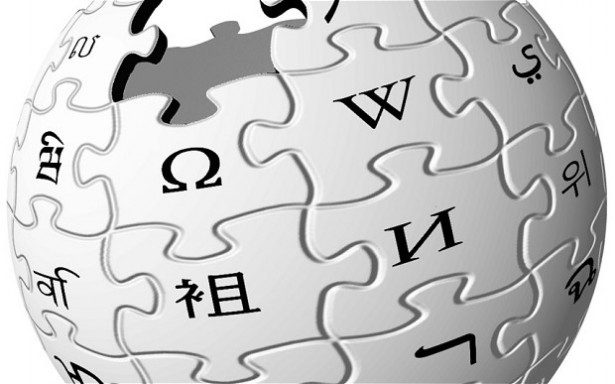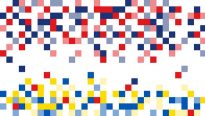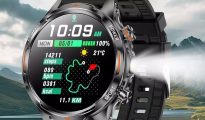Wiki technologies
13.06.08
“Telecom. Communications and networks” 5/2008 magazine, p. 58
The activities of individuals and organizations now increasingly depend on their knowledge, one of the most valuable resources of modern society, and the ability to use it effectively. However, the means designed to represent knowledge are still quite imperfect and often force people to look for solutions to the same problems again and again.
To optimize the search for the necessary information, various online services are being created these days. Thus, using Wiki technology in 2001, Wales and Sanger opened the Wikipedia website. Wikipedia is a multilingual, public domain, freely distributed encyclopedia published on the Internet. This “public” encyclopedia is a prime example of the rapid growth and accumulation of knowledge in the distributed environment of the Internet. It is created by the collective work of volunteer authors using Wiki technology.
Before Wikipedia, many methods of group communication were invented on the Internet: chat, web forum, blog. These technologies allow you to exchange information and somehow organize it, but none of them allows you to create a full-fledged, dynamically updated website. There are currently 253 language sections on Wikipedia.
The Ukrainian part of Wikipedia currently contains over 70 thousand articles, and the Russian part – over 250 thousand. Their growth rate is one of the highest (1000 articles per month). Obviously, not all Ukrainian- and Russian-speaking Internet users know about Wikipedia, but if you consider how many of these users are scientists and students, you can expect a significant increase in the rate of completion of these resources.
During its development, the Wikipedia project, despite concerns related to the unprofessionalism of the authors, possible vandalism, and the spontaneity of creating individual articles, made it possible to create a fairly high-quality product – a complete and objective multilingual encyclopedia, freely accessible to everyone. The success of Wikipedia demonstrated that Internet users demand reliable encyclopedic information. Therefore, the online encyclopedia project today is already a serious source of reference information and knowledge, which, unlike traditional sources, has a remarkable feature – efficiency.
The success of Wikipedia has given rise to a wide variety of other necessary projects that work on similar principles and serve to create other types of educational and reference publications.
Wiki technology and its main characteristics
Wiki is a technology for building a website that allows users themselves, through a web interface, to actively participate in the process of editing its content – correcting errors, adding new materials. Wiki technology does not require the use of special programs, registration on the server, or knowledge of HTML. The term Wiki also refers to the software that is developed to create such sites.
The information presented in Wiki has a non-linear navigation structure. Each page usually contains a large number of hyperlinks to other pages. The first wiki, WikiWikiWeb, was developed in 1994 and first appeared on the Internet in 1995. The first Wiki site was the Portland Sample Repository, created by Ward Cunningham, where code fragments were collected. The largest and most famous Wiki site is Wikipedia. Today, Wiki technology is used to create reference books, knowledge bases, and develop documentation. Modern Wiki engines allow you to work not only with texts, but also with spreadsheets, calendars, image galleries, files, etc. Mapping services can also be built using the Wiki principle. Development of Wiki applications for the corporate environment has appeared (for example, Confluence, Jot, Near-Time).
Wiki is designed to solve a simple and natural problem – to give every visitor the opportunity to participate in the development of content. Participate not only as a commentator, but also as a full-fledged author and editor – along with the administration and staff of the project. To do this, two things are necessary: firstly, the user must have the technical ability to make changes to the pages of the site, and secondly, this process should not require special knowledge and skills.
Wiki technology makes it possible to accumulate the knowledge of mankind, presenting it in an electronic interoperable form, to provide navigation through this knowledge base and a means of updating it. At the same time, communities of various sizes and thematic focus can use Wiki, creating knowledge bases from global Wikipedias and electronic encyclopedias of large corporations to easily updated reference systems of small organizations, enterprises and educational institutions. Wiki is a fairly complex system for collecting and structuring information. Its main characteristics are:
- the number of authors is commensurate with the number of Wiki resource users;
- support for multi-user work is provided;
- it is possible to edit any text multiple times using the Wiki environment itself (website);
- appearance of changes immediately after they are made;
- each Wiki article has its own unique name;
- the language of this markup is quite simple and does not require special knowledge;
- It is possible to revert to a previous version.
Compared to CMS (Content Management Systems), Wiki technology has the following differences:
- The title of the article is also a hyperlink for external systems.
- Articles are created and edited almost at any time by any user.
- Articles available for editing are located directly in the web browser.
- Each article provides access to view and edit page history/versions, which supports searching for existing discrepancies.
- Each article gives the user access to the discussion page for that article.
Wiki provides greater user rights when editing content, no hierarchy, and freer access to information. In addition, pages created in Wiki technology enable interoperability and knowledge reuse.
Wiki engines
Wiki engines are software used to create Wiki sites. Wiki engine is a set of programs used to convert Wiki markup into a human-readable representation in HTML.
MediaWiki is a software mechanism for creating websites using Wiki technology, developed specifically for Wikipedia by the German student M. Manske. This is one of the most powerful Wiki engines, written specifically for Wikipedia and used in many other projects of the Wikimedia Foundation. MediaWiki is written in PHP and uses a relational database (you can use MySQL, PostgreSQL); supports memcached and Squid programs.
MediaWiki provides an interface for working with the page database, differentiation of access rights to system administration, as well as the following capabilities:
- process text both in native format and in HTML and TeX formats (for formulas)
- upload images or other files, etc.
A flexible extension system allows users to add their own capabilities and programming interfaces. The next versions of MediaWiki continue to be developed. For example, new features included in the experimental version of MediaWiki include support for PostgreSQL and a system for approving completed and verified articles. In version 1.7.0, support for Oracle was removed due to the lack of movement in the development of this area.
There are many Wiki engines that have their own characteristics and advantages. In the table on p. 59 provides an overview of modern Wiki engines. The choice of Wiki engine depends on what set of functions and capabilities is required (version control, access restrictions, RSS feeds with information about page changes, subscription to changes to specific pages, etc.), on what platform it will be based and how all this will work, etc. First of all, you need to determine what will be used: Wiki on your own server or a Wiki service provided by an external organization. Many people recommend MediaWiki for creating online encyclopedias. WackoWiki, Confluence and NPJ are often used to create knowledge bases. For personal use, WikidPad or deskDo are used. TiddlyWiki and deskDo allow you to use Wiki technologies in the absence of the Internet.
Methodology for creating articles for Wikipedia
There is the “90-9-1” theory, which estimates the percentage of Wiki users, dividing them into three groups: 1) readers – 90%; 2) those who occasionally make some kind of contribution, 9% and 3) those who actively work on filling Wiki content – only 1%. It’s the 1% of users who do most of the work, but it’s helpful for the rest of us to know how they can join this group.
The openness of the technology did not lead, as many feared, to the destruction and damage of materials: Wiki stores all the changes that have occurred to all articles since their creation, so at any time you can compare different versions of the same article, edit the page again, or simply go back to the old version. This makes it easier to fix the damage than it is to cause it. In addition, administrators always have the opportunity to block changes to individual pages (in particular, the most controversial ones).
Wiki pages are articles whose content is plain text, where you can use HTML tags or special Wiki markup that is more convenient for text documents than HTML. Using a link or button, any visitor to a Wiki site can edit and save a modified version of the text of any existing page or create a new one. The procedure for publishing text on Wikipedia is reduced to two buttons – “Edit” and “Save”.
The rules for creating Wikipedia articles aimed at creating high-quality texts are quite simple, but several conditions must be met:
1. The inclusion of texts and images protected by copyright is prohibited.
2. When writing any article, you should strive for a neutral presentation and reflect all known points of view.
3. It is necessary to indicate sources of information to confirm the accuracy of the information.
There are two types of articles that do not comply with the neutrality policy: articles that clearly conflict with the requirements of neutrality and articles that do not describe all opinions or are not detailed enough. In the first case, the article must be marked as biased ({{POV}}). The non-neutral part of the information in such an article is subject to correction or deletion. In the second case, the article should only be considered incomplete, no matter how impartial and detailed the information already available in it may be.
A certain part of Wikipedia articles are automatically created “blanks”. There are three types of links on Wikipedia: to existing articles, to unwritten articles, and to external web resources. In order to create a hyperlink to an article, simply when adding Wiki markup, enclose the title of the article you want to link to in double square brackets – [[Title of the article]]. If the article the link points to does not exist, the link will still be created, but its text will be red instead of the usual blue. By activating this link, you can go to the article template and write it, actually editing the template.
When any author marks a term or expression in the text as a link to a non-existent article, Wikipedia automatically generates a new template article containing the text: “The article has not been written yet, you can write it.” Authors who access this link expand the content of the “dummy”.
Almost any page on a Wiki site can be edited. In order to make changes to the article, you must:
- click on the “Edit” button or on the “Edit” link (for an article section), after which a form with the text of the article (section) will open;
- make the desired changes to the text of the article;
- for control purposes, view the list of edits made (the “Made edits” button);
- make sure that the edits are correct by previewing the text of the article (the “Preview” button);
- fill in the field “Briefly describe the essence of your edit” and click the “Save page” button.
Search Wikipedia
Today there are many national Wikipedias and projects. Searching this multitude of information resources manually is quite labor-intensive. Qwika is a search engine focused on processing Wiki sites. Its task is to cover all major Wikipedias in all fairly common languages, translate them and provide quick search. Currently, the system indexes the following resources:
- English Wikipedia and all the name areas within it (Chat, Image, User, etc.).
- English Wikipedias (machine translation of popular Wikipedias in other languages).
- Wikipedia in other languages.
- Tourism project WikiTravel.
- Cached versions of all pages in both the original language and machine translation.l
Gladun Anatoly, senior researcher, candidate of technical sciences, International Scientific and Educational Center for Information Technologies and NASU systems;
Yulia Rogushina, senior scientific employee, candidate of physical and mathematical sciences, Institute of Software Systems NASU
Web-droid editor
Don't miss interesting news
Subscribe to our channels and read announcements of high-tech news, tes
Oppo A6 Pro smartphone review: ambitious

Creating new mid-range smartphones is no easy task. Manufacturers have to balance performance, camera capabilities, displays, and the overall cost impact of each component. How the new Oppo A6 Pro balances these factors is discussed in our review.
Editor’s Choice 2025. Best devices of the year by hi-tech.ua

The best gaming laptops, mice for work, gaming keyboards, smartphones, and wireless headphones of 2025. Among them, we will highlight the most interesting ones and those that we can recommend buying.
Rogbid Enduro – smartwatch with large 1100 mAh battery and $30 price protection smart watches
Chinese company Rogbid introduced the Rogbid Enduro smartwatch, emphasizing autonomy and increased durability.
Over 19,000 games were released on Steam in 2025, half of which players didn’t even notice games Steam
In 2025, more than 19,000 games were released on the Steam platform – this is new record for the service and more than last year, when 18,559 releases were recorded.






